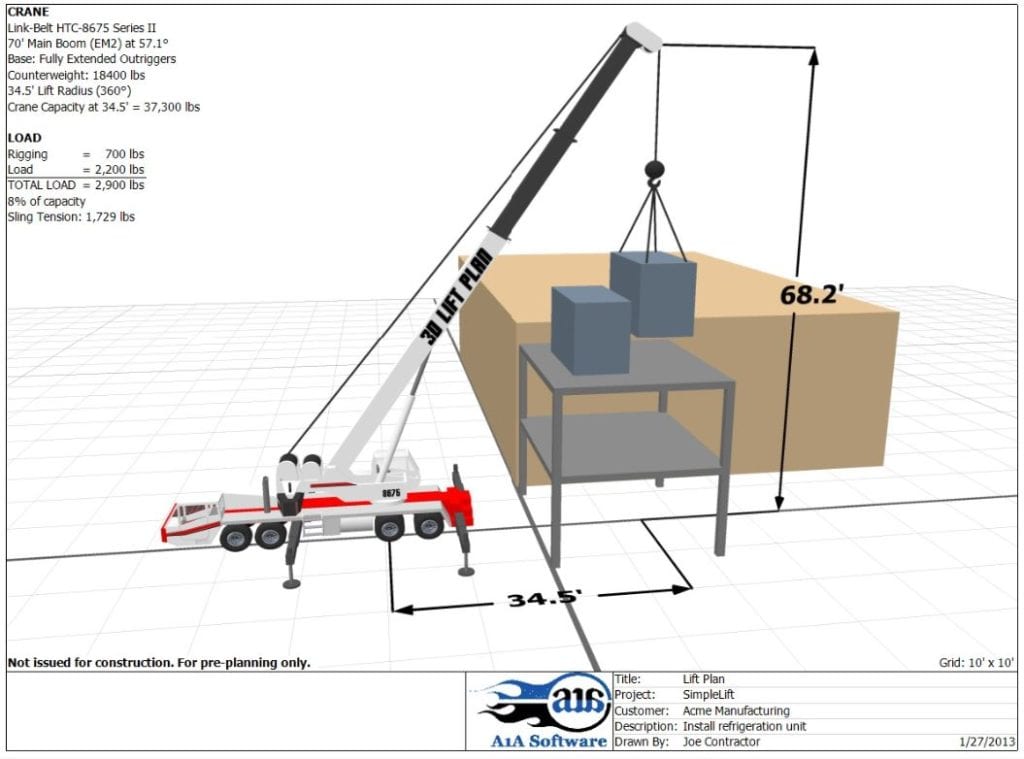
 A lift that does not include lifting points.Ī technical review of the non-routine lift plan, typically by an engineer or other experienced person, should be completed. A tandem lift that requires to machines. A lift from one onshore vessel to another. Other examples of non-routine lifts include, but are not limited to: Or, the load may be standard, but the environment is challenging. The lift area is not challenging, such as limited headroom or difficult soil conditions.Ī Non-routine lift exceeds the parameters of a routine lift due to particularly heavy or odd-shaped loads. Standard rigging and a certified lifting point will be used. The load weight, dimensions, and center of gravity are within normal parameters. Other aspects of a routine lift include, but are not limited to: In general, a routine lift will fall well within the maximum abilities of the machine. There are two types of lifts: routine and non-routine. A risk mitigation plan will become part of the overall lifting plan. Power lines or poor ground conditions are examples of hazards that increase the risk of lift failure. Risk Assessmentĭuring the site survey, any possible risks to the safe implementation of the lift should be documented. Any specifics about the load and the lift area that will impact the success of the lift should be documented. The type and quality of the access road should be assessed to determine how the equipment will reach the site. This includes determining the specifics of the load to be lifted, ground conditions, where the lift will start and where it will end. This includes: Site SurveyĪ qualified person must perform a site survey. There is important work to be done prior to developing and documenting the lifting plan. Your lift plan should include an overview section. But others, like directors, only need a high-level understanding of the lift.
A lift that does not include lifting points.Ī technical review of the non-routine lift plan, typically by an engineer or other experienced person, should be completed. A tandem lift that requires to machines. A lift from one onshore vessel to another. Other examples of non-routine lifts include, but are not limited to: Or, the load may be standard, but the environment is challenging. The lift area is not challenging, such as limited headroom or difficult soil conditions.Ī Non-routine lift exceeds the parameters of a routine lift due to particularly heavy or odd-shaped loads. Standard rigging and a certified lifting point will be used. The load weight, dimensions, and center of gravity are within normal parameters. Other aspects of a routine lift include, but are not limited to: In general, a routine lift will fall well within the maximum abilities of the machine. There are two types of lifts: routine and non-routine. A risk mitigation plan will become part of the overall lifting plan. Power lines or poor ground conditions are examples of hazards that increase the risk of lift failure. Risk Assessmentĭuring the site survey, any possible risks to the safe implementation of the lift should be documented. Any specifics about the load and the lift area that will impact the success of the lift should be documented. The type and quality of the access road should be assessed to determine how the equipment will reach the site. This includes determining the specifics of the load to be lifted, ground conditions, where the lift will start and where it will end. This includes: Site SurveyĪ qualified person must perform a site survey. There is important work to be done prior to developing and documenting the lifting plan. Your lift plan should include an overview section. But others, like directors, only need a high-level understanding of the lift. 
The workers involved in the actual lift need all the details. You need to consider who will read the lifting plan. Now we will provide guidelines for creating the actual lifting plan.

Specifically, all of the details that impact how a lift will be performed. There are many risk factors involved in any lift - and it is important to document these risk factors in a permit so that everyone is aware of the circumstances of the lift and the surrounding environment and personnel.In our first article on lifting plans, we discussed why you need one. Site lifts can also be dangerous and carry a high risk of injury and damage. They are also one of the most fascinating, with many different types of cranes lifting any and all types of materials into places we humans wouldn't otherwise be able to reach. Lifts are an integral part of the construction landscape. This lift permit template is free to use and makes the job of preparing for and documenting those all important lifts quick, easy and reliable.







 0 kommentar(er)
0 kommentar(er)
